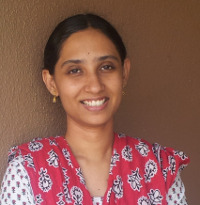Syllabus
Chapter 1: Introduction
This chapter motivates the field of wireless networks, covers some related history, followed by
challenges that explain why wireless protocol design is difficult.
Chapter 2: Physical Layer
This chapter deals with the challenges related to converting bits to signals. It starts with various
modulation techniques, followed by antenna fundamentals. It then digs into the various channel models
that capture how signals get distorted in air and then covers solutions that help recover back bits from
distorted signals.
Chapter 3: Link Layer
This chapter covers various topics related to link layer: Framing, Error Control, Media Access Control (MAC).
Two case-studies involving current technologies 802.11 and Cellular are also covered.
Chapter 4: Network Layer
Mobility is essential to handle as part of wireless networks. The chapter covers network layer solutions to
handle mobility (specifically Mobile IP) and also ad-hoc/mesh routing protocols like DSDV, OLSR, DSR.
Chapter 5: Transport Layer
This chapter discusses the various implications of wireless media on current transport layer protocols and
then covers solutions that can improve their performance.
Level
Undergraduate
Prerequisites
Computer Networks
Category
Self-paced
Estimated Time
50 hours
Meet the instructor

Kameswari Chebrolu
Kameswari Chebrolu is currently an associate professor with the Department
of Computer Science and Engineering at the Indian Institute of Technology, Bombay, India. She received her
Ph.D. degree in Electrical and Computer engineering from the University of California at San Diego in 2004.
She is passionate about teaching and likes to experiment with various techniques to improve learning. She has
been a recipient of the “IIT Bombay Excellence in Teaching” award in 2010.
The focus of Kameswari's research work is on developing cutting-edge technology for real-world use. In the past, she has worked on projects aimed at providing Internet access to rural villages, enabling voice communication in remote tribal areas, monitoring the health of railway bridges. Currently she is focused on developing smart educational technology, AI-human-hybrid technology that caters to the information needs of bottom of the pyramid and countering fake news on social media, specifically on Whatsapp.
The focus of Kameswari's research work is on developing cutting-edge technology for real-world use. In the past, she has worked on projects aimed at providing Internet access to rural villages, enabling voice communication in remote tribal areas, monitoring the health of railway bridges. Currently she is focused on developing smart educational technology, AI-human-hybrid technology that caters to the information needs of bottom of the pyramid and countering fake news on social media, specifically on Whatsapp.

